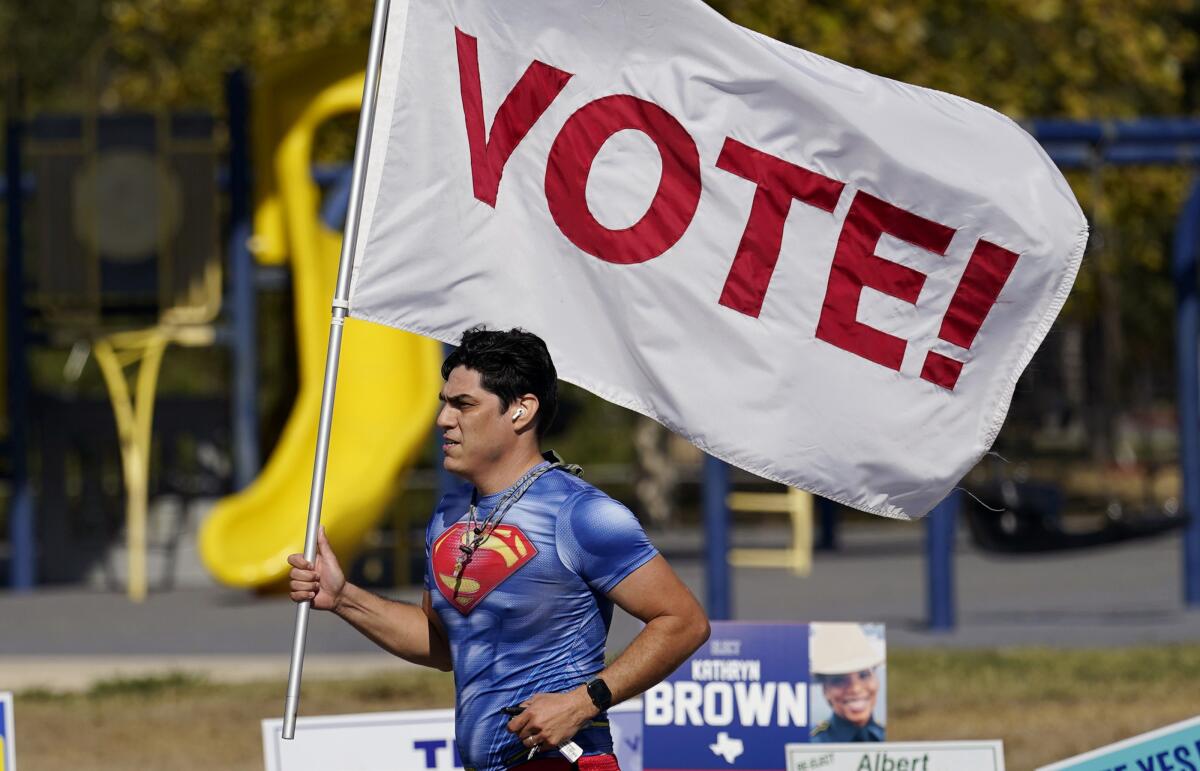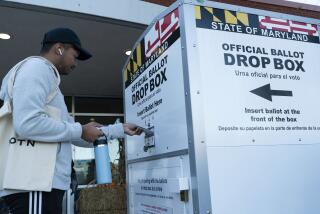Editorial: Don’t weaken what’s left of the Voting Rights Act

In a disastrous decision in 2013, the Supreme Court gutted an important piece of the landmark Voting Rights Act: a requirement that states with a history of racial discrimination get permission from the Department of Justice or a federal court before making any changes in voting procedures.
On Tuesday the court heard arguments in an Arizona case that involves another key part of the law’s prohibitions against racial discrimination. That would be Section 2 of the Voting Rights Act, which allows legal challenges to election procedures that result in “a denial or abridgement of the right of any citizen of the United States to vote on account of race or color.”
This time the court must not water down the law’s protections for voters of color.
At issue in this case are two restrictions in Arizona election law. One requires that officials discard provisional ballots cast by voters who showed up at the wrong precinct, even if the ballots include statewide or national offices where precincts are irrelevant. The other targets collection of mail ballots by third parties — so-called “ballot harvesting.” Arizona allows only certain people — such as family members and caregivers — to handle mail ballots. Mass collection of ballots doesn’t necessarily lead to fraud, but it can undermine public confidence in elections.
The U.S. 9th Circuit Court of Appeals struck down both provisions, concluding plausibly that they had a discriminatory impact on minority voters in a state with a history of racial bias. Arizona appealed to the Supreme Court, insisting that the state had ensured that “all citizens have an equal opportunity to vote.”
At Tuesday’s argument, Arizona Atty. Gen. Mark Brnovich also suggested that the alleged disparate impact on minorities involved mere “statistical anomalies.” Justice Neil Gorsuch pithily noted that what Brnovich called “statistical anomalies” were what “the other side would call proof.”
Not all supporters of voting rights think the appeals court got this case right. But this case is about much more than these two disputed Arizona provisions; it gives the court the chance to declare how broadly courts faced with claims of voting discrimination should interpret the “results test” of Section 2, which in the past arose mostly in redistricting cases.
Michael Carvin, a lawyer representing the Arizona Republican Party, argued that “Arizona has not denied anyone any voting opportunity of any kind.”
That’s far too narrow an approach, and it would be a travesty if the court adopted it. Courts must look not only at whether there is equal opportunity to vote on paper, but also at whether some practices have the real-world effect of disenfranchising minorities. And part of that inquiry is to look at both statistics and whether a state has a history of racial discrimination.
Emboldened by former President Trump’s lies about a fraudulent election, Republican state legislators across the nation are proposing measures that would make it harder to vote. It’s imperative that Congress enact measures to rectify the harm caused by the Supreme Court’s 2013 decision and to protect against new state efforts to suppress turnout.
But the Supreme Court also must play its part. However it rules on Arizona’s election laws, it must make clear that Section 2 of the Voting Rights Act will protect minority voters from subtle as well as overt discrimination.
More to Read
A cure for the common opinion
Get thought-provoking perspectives with our weekly newsletter.
You may occasionally receive promotional content from the Los Angeles Times.






